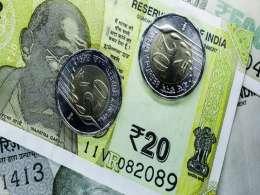Admittedly this is an odd submission for me, but I thought I should lighten it up a bit after the last piece. So, here goesâ
Recently I have noticed two physical trends in and around Bangalore, and that could be a proxy for what's happening virtually throughout India first, all parts of tier 1 and 2 cities are being graced with some variation of concrete skeletal outlines of everything from hotels, apartment buildings, educational institutions and of course transportation infrastructure; and second, for every billboard/hoarding that is torn down due to road expansion, there are multiple that actually pop up leading to a proliferation of multi-storied digital and analog signage across the nation. Since it is hard to avoid the latter, I have found myself spending more time noticing who is selling what and how. Almost all are targeting domestic consumption which, of course, is growing rapidly. The usual suspects include real estate, automotive, banks, telecommunications, electronics, jewelry etc, with the IT companies thrown in for good measure, which is not all that surprising. What did surprise me, however, is how they sell or what subjects are used in their advertisements to sell a particular set of products or services.
Lately, I have been noticing a lot of "white" subjects in offline ads, billboards/hoardings, from jewelry and apparel to eyewear, health and beauty etc. What came as real surprises were two sectors where blonde/blue-eyed men, women and children are commonly used as subjects, but are actually completely unrepresentative of the customer set that these sectors are targeting. One set of such advertisers are the real estate developers who occupy close to 25% of all ad inventory (my guesstimate), I am not sure why a nice European family is representative of a typical customer for a new 1-2 bedroom apartment in the heart of traditional south Bangalore. More surprising was when I saw India's very own Life Insurance Corporation of India, using smiling blonde women and kids in their ads. My assumption is that a negligible percentage of LIC's business comes from non-Indians, if at all.So, why not use Indians who, by the way, are among the most beautiful people on earth, no matter what one's definition of beautiful might be. The fact that Titan, LIC and many of the real estate brands use non-Indian, and typically "white" characters to push their products or service, is indicative, unfortunately of an underlying fascination, admiration and aspiration for the fair skin.
I have noticed that fascination for fair skin among the domestic help network of drivers, cooks and maids. FMCG companies have entire product lines targeting consumers who want to look more "fair" (the irony is that those with fair skin effectively burn themselves to try and get darker by getting the right tan). Interestingly enough, there is a pyramid of sorts when it comes to who the domestic staff prefer to work for. Again, based on my experience (which readers may consider atypical), the sequence goes something like the following: the top of the pyramid are whites (British, Europeans, Australians and Americans), then the non-white foreigners, followed by local south Indians (my experience living in Bangalore), and then comes yours truly (north Indian). In this case, I find myself truly at the bottom of this pyramid. By the way, the same is true for shopkeepers, hotels etc, who seem to bend over backwards as soon as a white American, European or Australian walks in the door versus a "not so white" local.
Bottom line: In my opinion, India has the most beautiful people with exquisite features that ought to be (and increasingly are) subjects in marketing materials, especially for products and services targeting the Indian consumer (I can understand, for example, why Lufthansa might want to use German father/daughter theme in their ads). But the fascination with the stereotypical blonde/blue-eyed look remains fairly strong across the social strata whether it's some of the largest companies in India with their advertising themes, the common person who directly associates fairness with beauty in India, or the preference for the drivers, cooks and maids to work for white foreigners as a status symbol. I, for one, certainly hope that the thought process changes.





